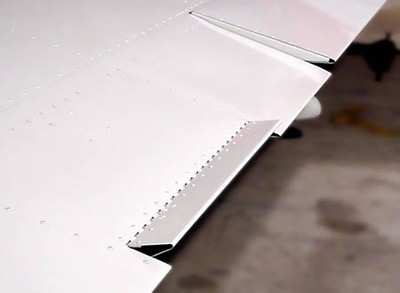Aero-Tips!
A good pilot is always learning -- how many times have you heard
this old standard throughout your flying career? There is no truer
statement in all of flying (well, with the possible exception of
"there are no old, bold pilots.")

Aero-News has called upon the expertise of Thomas P. Turner,
master CFI and all-around-good-guy, to bring our readers -- and us
-- daily tips to improve our skills as aviators. Some of them, you
may have heard before... but for each of us, there will also be
something we might never have considered before, or something that
didn't "stick" the way it should have the first time we memorized
it for the practical test.
Look for our daily Aero-Tips segments, coming each day to you
through the Aero-News Network.
Aero-Tips 11.23.06
Many airplanes have electric trim systems. Electric trim reduces
the workload of fine-tuning trim position. It is also an essential
component of autopilots -- autopilots adjust flight attitude by
adjusting the electric trim. Like any other system there's the
remote chance of a failure. When a trim system fails aircraft
attitude can change rapidly -- why we call the scenario a "trim
runaway".

The scenario
It happens (I've had it happen to me twice). You're alone in the
clouds, or at night, or even in good visual weather. Blissfully
cruising along on autopilot, suddenly the airplane pitches up
sharply, g-forces pushing you deeper into your seat, and the
airspeed drops rapidly toward a stall. Perhaps the pitch excursion
is downward, negative g's flexing the airplane structure as the
airplane noses down, speed building rapidly into the yellow arc.
Maybe it's an uncommanded roll that takes you off heading and
toward an incipient spiral.
Or maybe you're hand-flying the airplane, and when you blip the
electric trim one way or the other it continues to run in that
direction, headed for the stops. Again, the plane will pitch, roll
and/or yaw, ever diverging from safety.
If either happens close to the ground or during an instrument
approach you may have very little room to recover. Whatever the
scenario, you have to act FAST to prevent a dangerous
situation.
The solution
Most airplanes with electric trim systems have a disconnect
switch. In some types the switch is labeled "autopilot
disconnect/trim interrupt" -- it will disengage the autopilot when
hit, but interrupts power to the electric trim system only as long
as you hold down the switch.
From where you sit you usually can't tell whether a trim runway
is a trim servo failure or some faulty logic in your autopilot,
telling the trim to keep running. Regardless, the solution is the
same, adjusted as needed for the equipment in the airplane you're
flying:
If your airplane has a TRIM DISCONNECT switch:
- HIT AND HOLD the trim disconnect switch
- Manually overpower the trim excursion to regain aircraft
control
- If able, manually trim off trim pressures (note: not all
airplanes with electric trim have a manual trim capability)
- Turn OFF the TRIM POWER switch, if equipped
- Pull the TRIM POWER circuit breaker
- Continue flight trimming manually and without use of the
autopilot.
If your airplane does NOT have a TRIM DISCONNECT switch:
- Manually overpower the trim using the control yoke
- If able, manually trim off trim pressures (note: not all
airplanes with electric trim have a manual trim capability)
- Turn OFF the TRIM POWER switch, if equipped
- Pull the TRIM POWER circuit breaker
- Continue flight trimming manually and without use of the
autopilot.
If you're flying one of the new-generation airplanes with an
electric trim system and no manual control, you'll have to manually
overpower the out-of-trim airplane all the way to landing -- even
more incentive to catch a trim runway FAST before it progresses too
far.
 Aero-News: Quote of the Day (04.28.25)
Aero-News: Quote of the Day (04.28.25) ANN's Daily Aero-Term (04.28.25): Decision Altitude (DA)
ANN's Daily Aero-Term (04.28.25): Decision Altitude (DA) ANN's Daily Aero-Linx (04.28.25)
ANN's Daily Aero-Linx (04.28.25) Airborne-Flight Training 04.24.25: GA Refocused, Seminole/Epic, WestJet v TFWP
Airborne-Flight Training 04.24.25: GA Refocused, Seminole/Epic, WestJet v TFWP Aero-News: Quote of the Day (04.29.25)
Aero-News: Quote of the Day (04.29.25)




